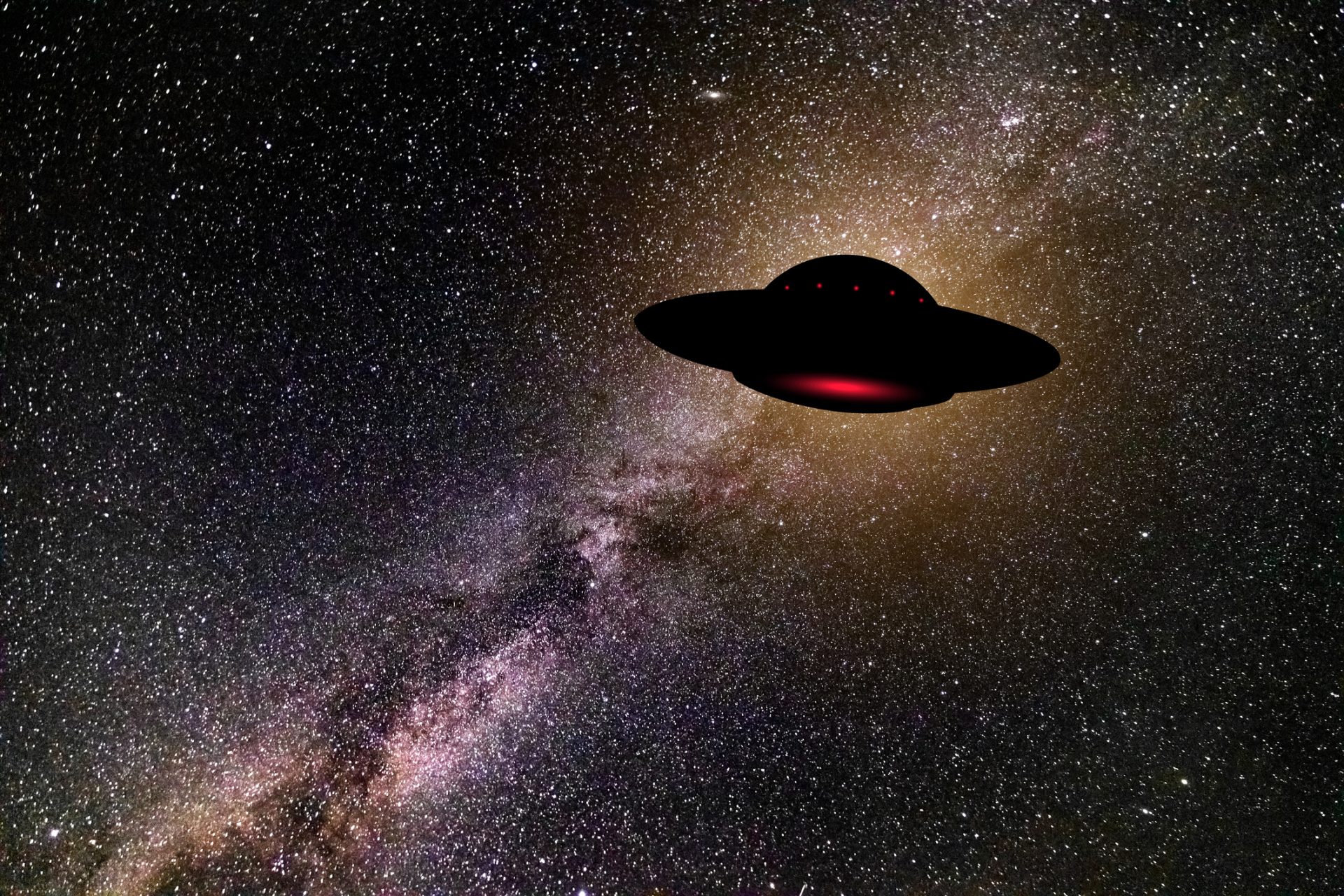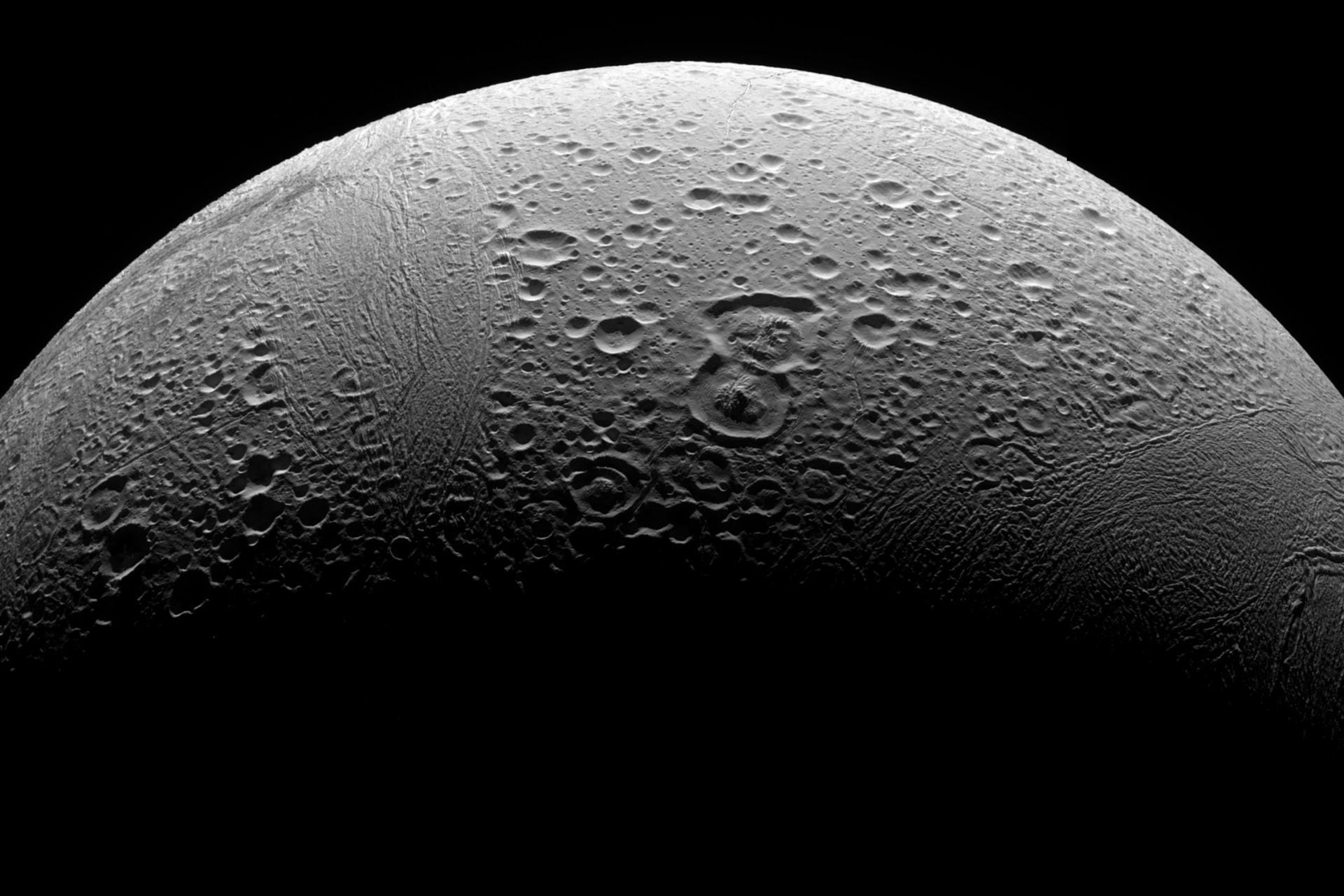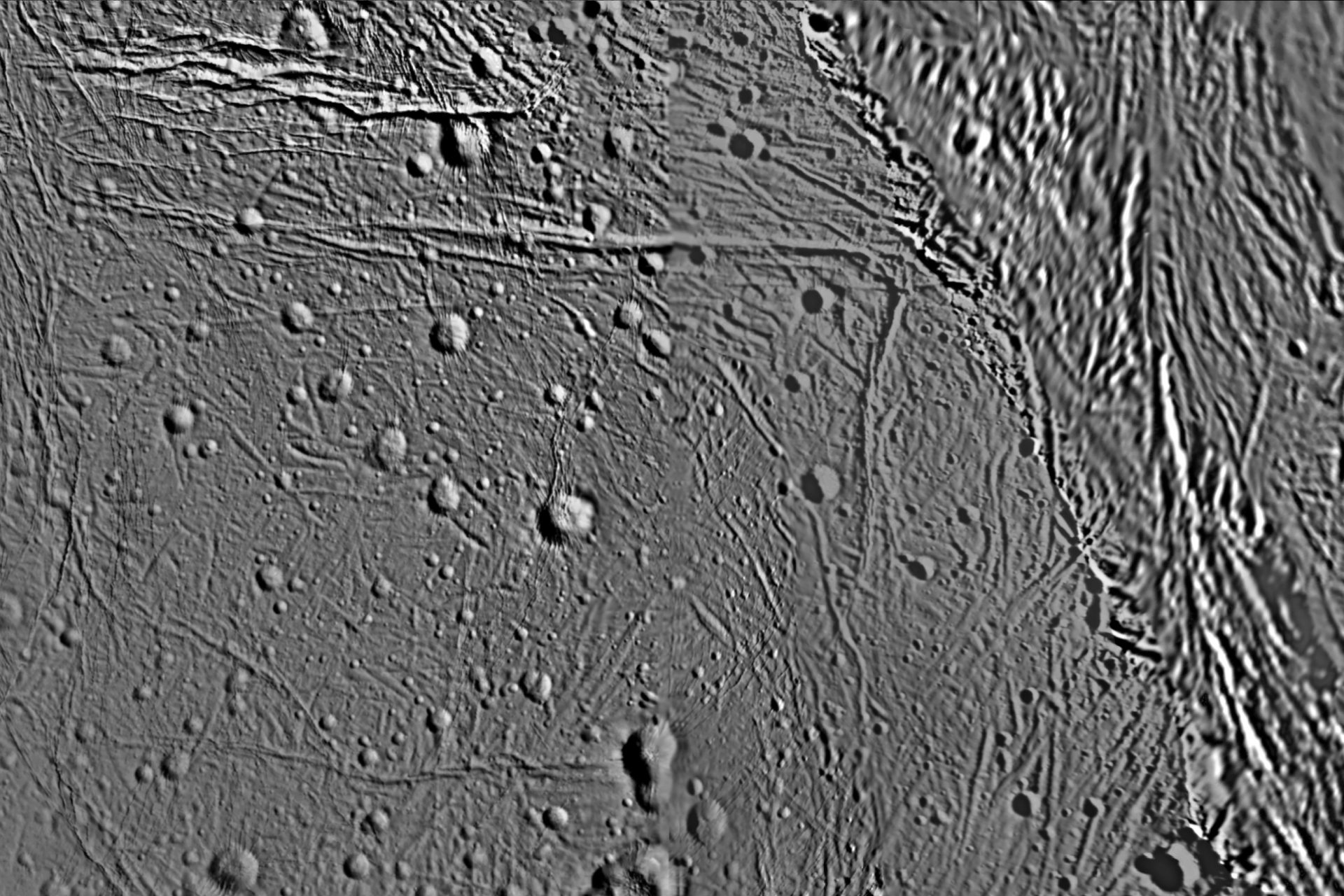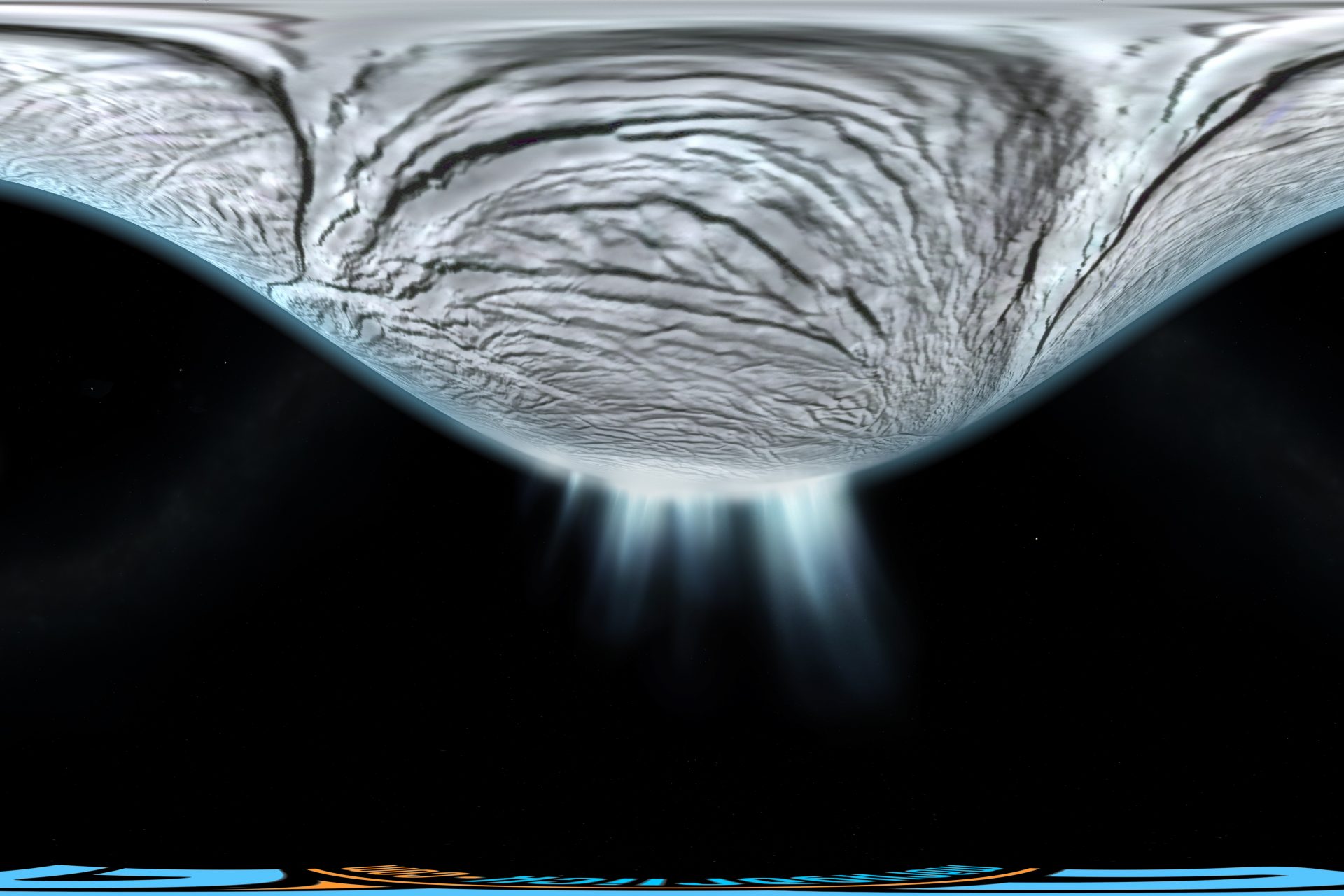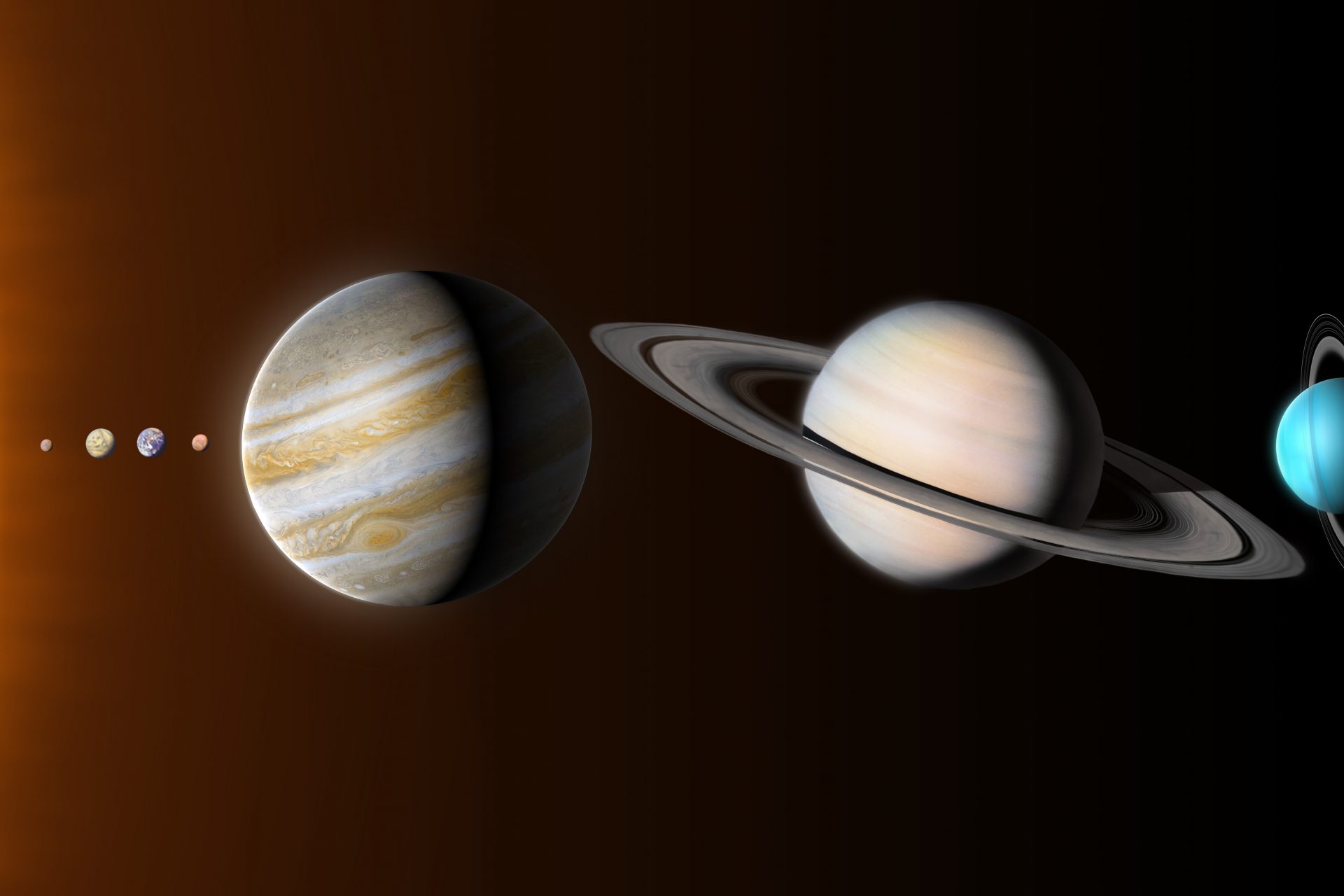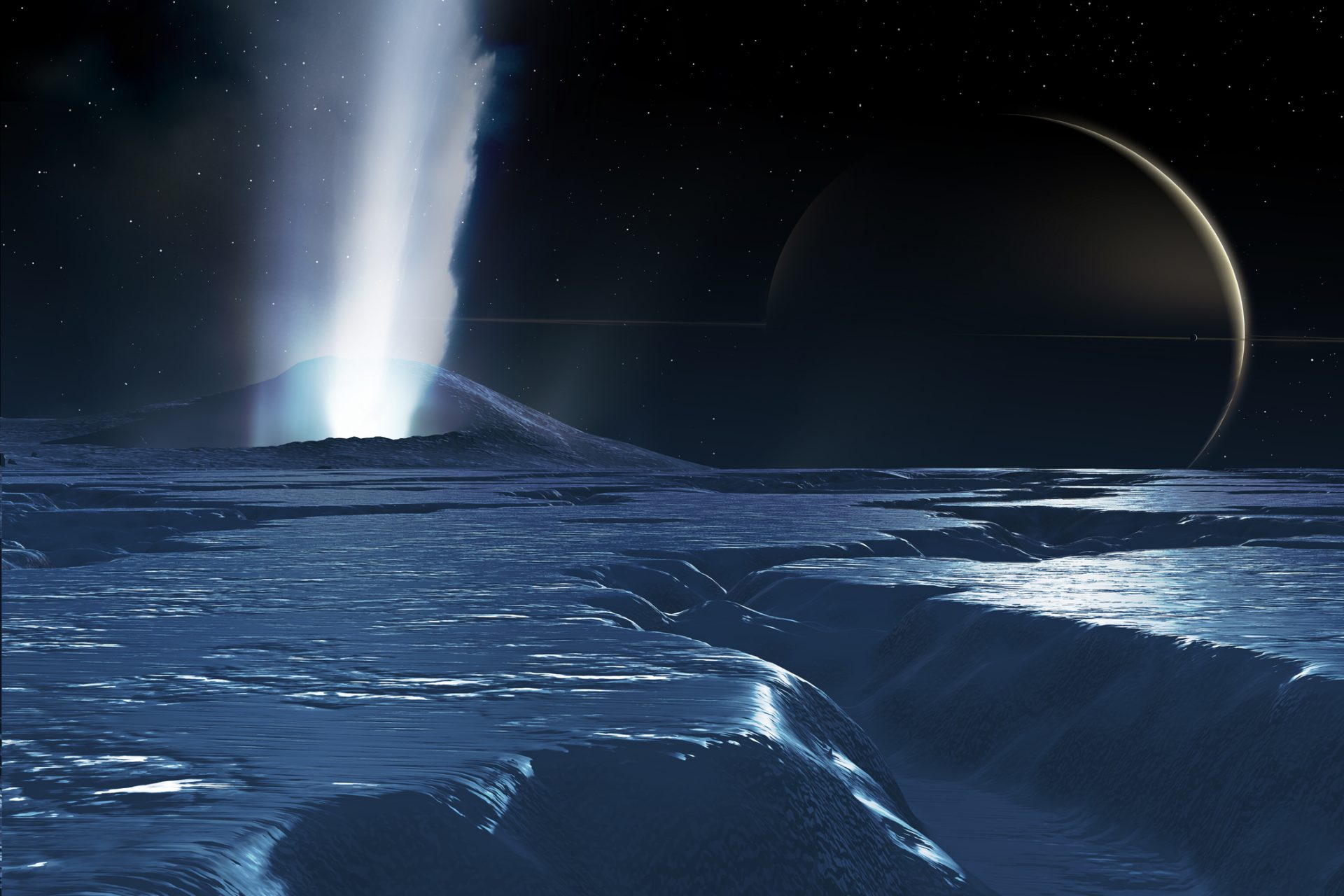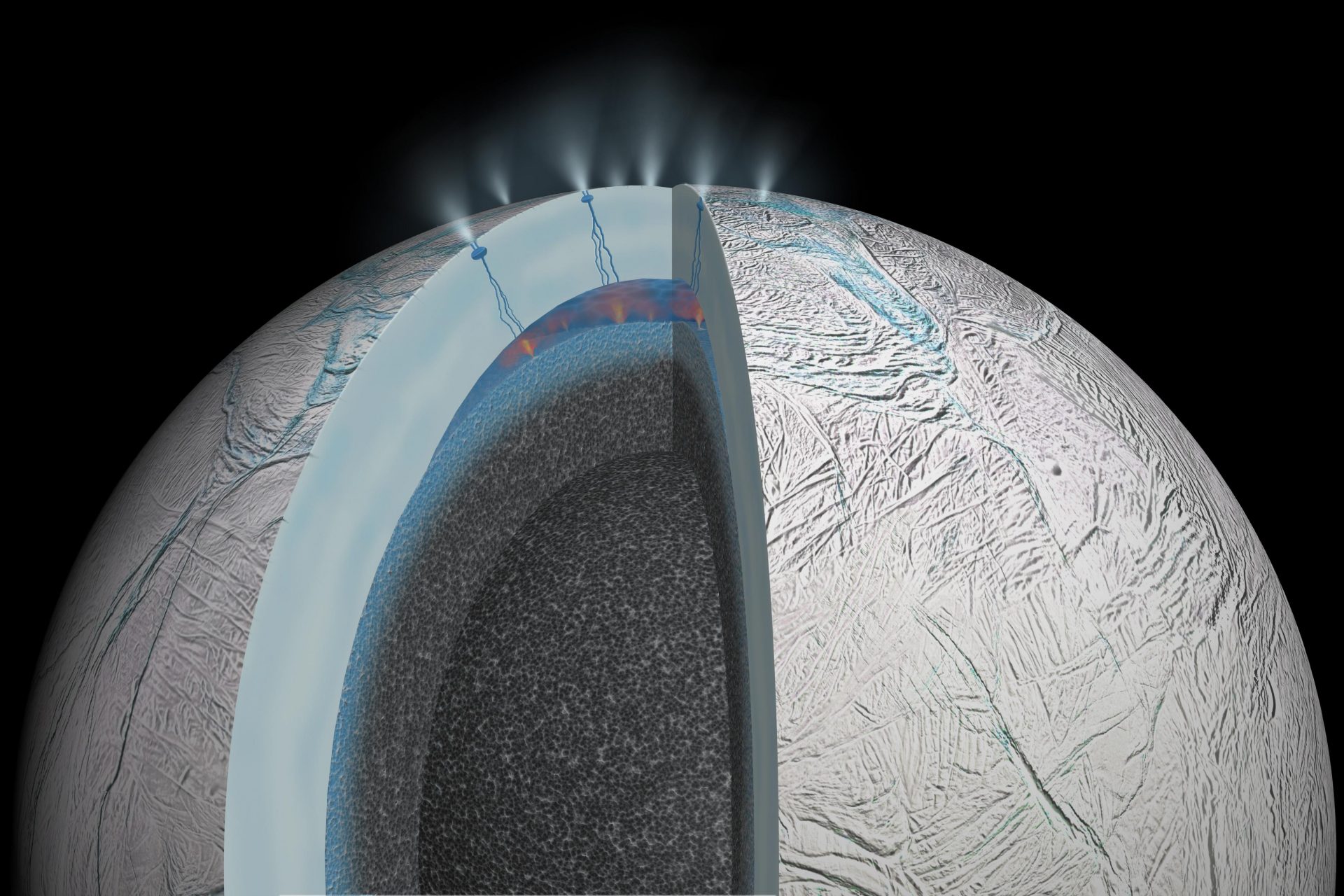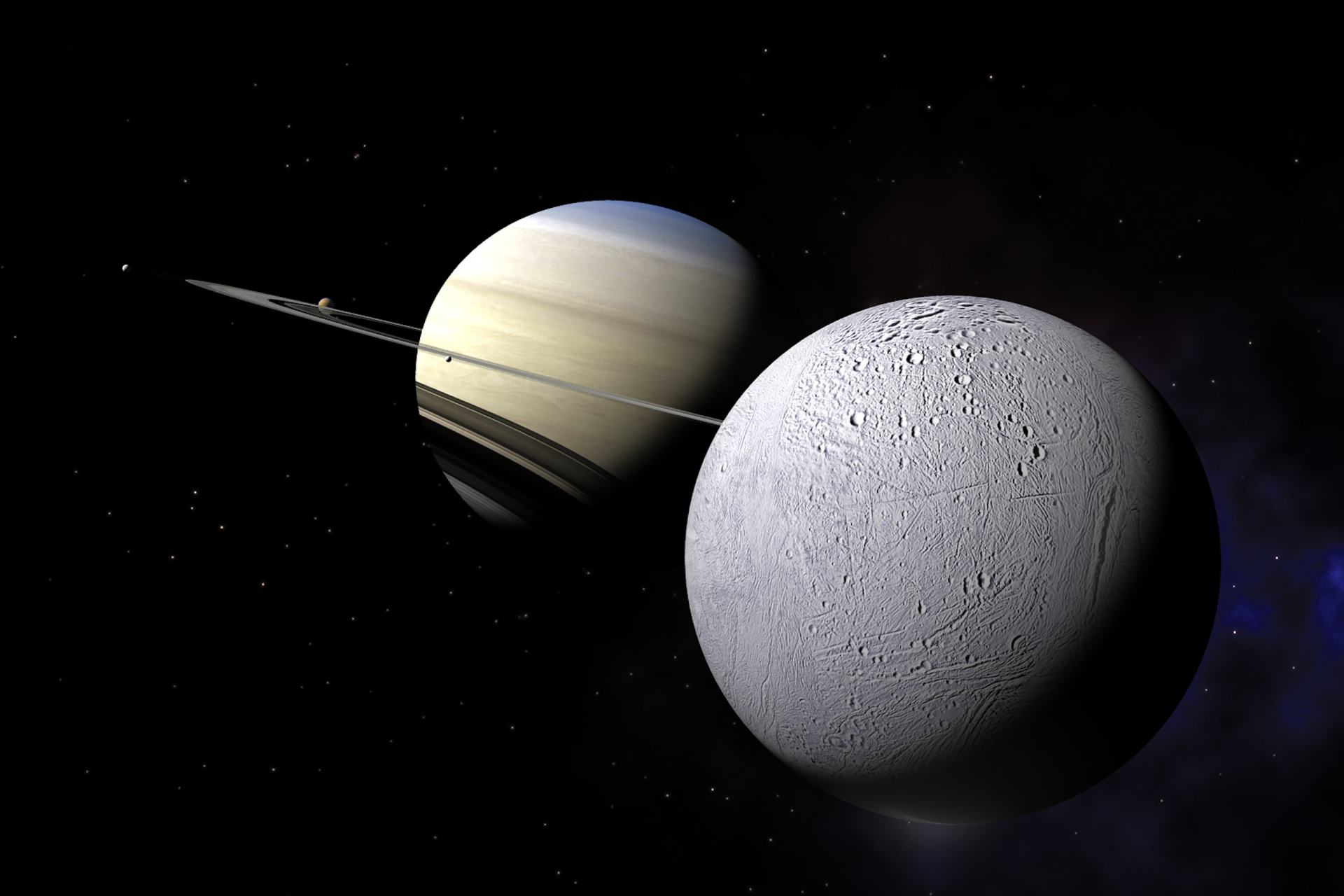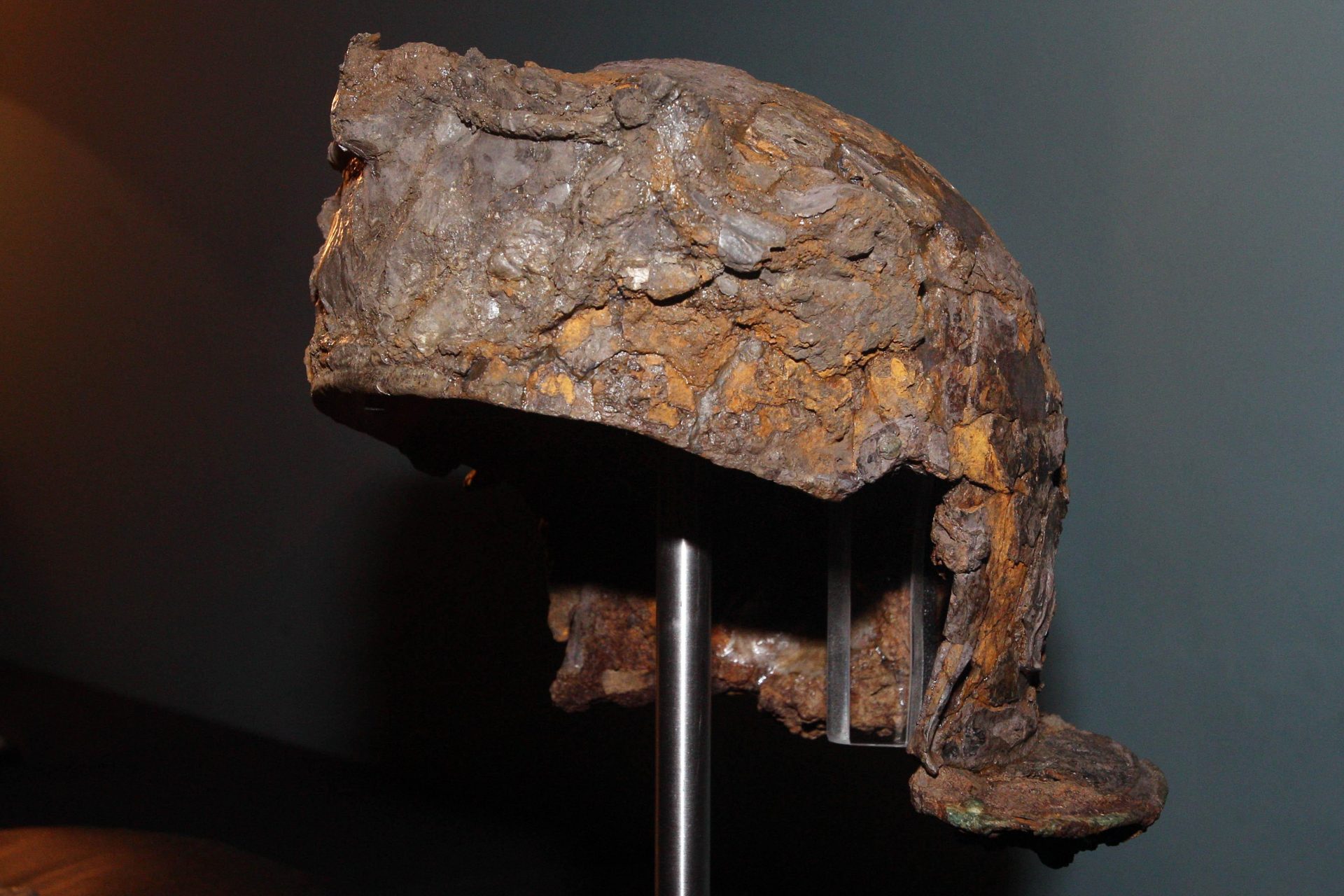Could extraterrestrial life be hiding on one of Saturn's moons?
Humanity has always looked up to the stars and wondered if we were alone in the universe but it's not a question that is easily answered, at least until now. Life that didn't develop on our planet may just a spaceship ride away.
Saturn's ice moon Enceladus is one of the leading contenders for the first place we might find life in the universe and it is because of the very unique set of chemicals we think are probably on the moon that may be why it harbors life.
Never miss a story! Click here to follow The Daily Digest.
Photo Credit: Wiki Commons By NASA/JPL/Space Science Institute, Public Domain
This extraterrestrial life of course wouldn't be anything as advanced but even if we did discover simple-celled organisms that didn't come from Earth, it would change the whole possibility of what kind of life could exist in our universe.
It seems strange that life could exist so close to the Earth. But with the recent groundbreaking discovery of phosphorus on Saturn's sixth-largest moon, the possibility of finding life a little over 880 million miles away is a lot more likely.
The latest reason why scientists think Enceladus could be home to life is because of the discovery of phosphorous on the planet, something that a research paper that was published in 2023 in the journal Nature revealed to the world.
Photo Credit: Wiki Commons By NASA/JPL/Space Science Institute, Public Domain
Phosphorous is one of the key building blocks of life that is required for life to thrive and its discovery of the molecule hiding beneath Enceladus' icy crust could be a sign that there's more than just an ocean underneath the surface of the moon.
"This is a stunning discovery for astrobiology," said Christopher Glein of the Southwest Research Institute according to PsyPost. Glien was co-author of a research paper that revealed phosphorus had been found on Enceladus.
"We have found abundant phosphorus in plume ice samples spraying out of the subsurface ocean," Glein continued, which makes the possibility of finding life on the moon even more tantalizing.
Enceladus has actually been one of the biggest contenders for the title of a celestial body that could be hiding life outside of our planet for some time now, and that's due entirely to what researchers have already discovered on the ice moon.
Photo Credit: Wiki Commons By NASA/JPL-Caltech
Smithsonian Magazine noted prior to the discovery of phosphorus on Enceladus that five of the other six necessary elements needed to sustain life were found on icy ocean moons.
“This was basically the last piece that was needed to finally… deem Enceladus’s ocean to be habitable without any doubt,” Frank Postberg explained to Vice’s Becky Ferreira about the disocvery.
Postberg is a planetary scientist at the Free University of Berlin as well as another co-author of the study published in Nature that revealed the detection of the final puzzle piece needed to sustain life on Enceladus.
Enceladus is very rich in organic material according to Postberg and the likelihood of life being at the bottom of the icy moon’s oceans was high, but the ocean moon was missing one ingredient.
“The missing ingredient was phosphorus,” Postberg said, adding that it was “considered critical” and that’s why it got a lot of attention as the only element not found by Cassini.
Researchers used data from NASA’s Cassini Mission—which studied Saturn as well as its ocean moon of Enceladus between 2004 and 2017 according to a report from CNN.
Cassini’s Cosmic Dust Analyzer discovered all the telltale signs of the elements needed to foster life, and the study’s authors found phosphorous in the form of phosphates icy in salt grains that were ejected into space from Enceladus.
Previous research was divided on whether the hidden oceans on Enceladus contained phosphorus but Cassini’s “measurements leave no doubt that substantial quantities of this essential substance are present in the ocean water,” Postberg said in a statement quoted by CNN.
“Phosphorus in the form of phosphates is vital for all life on Earth,” Postberg added. “It is essential for the creation of DNA and RNA, cell membranes, and ATP (the universal energy carrier in cells)... Life as we know it would simply not exist without phosphates.”
Smithsonian Magazine pointed out phosphorus is the twelfth most abundant element on Earth but the study’s authors say it's never been discovered in the oceans of another world.
However, for all the excitement around the discovery, Postberg warned people shouldn’t get too excited as the presence of phosphorus on Enceladus doesn’t mean it holds life.
“We don’t know yet if this very habitable place is actually inhabited,” Postberg told the New York Times. “But it is certainly worth looking at.”
There are no missions to Enceladus currently planned though a proposal to visit the moon by 2050 has been suggested. if we did make a trip back, sending the equipment needed to find life would hopefully be a top priority!
Photo Credit: Wiki Commons By Kevin Gill, CC BY-SA 2.0
More for you
Top Stories



